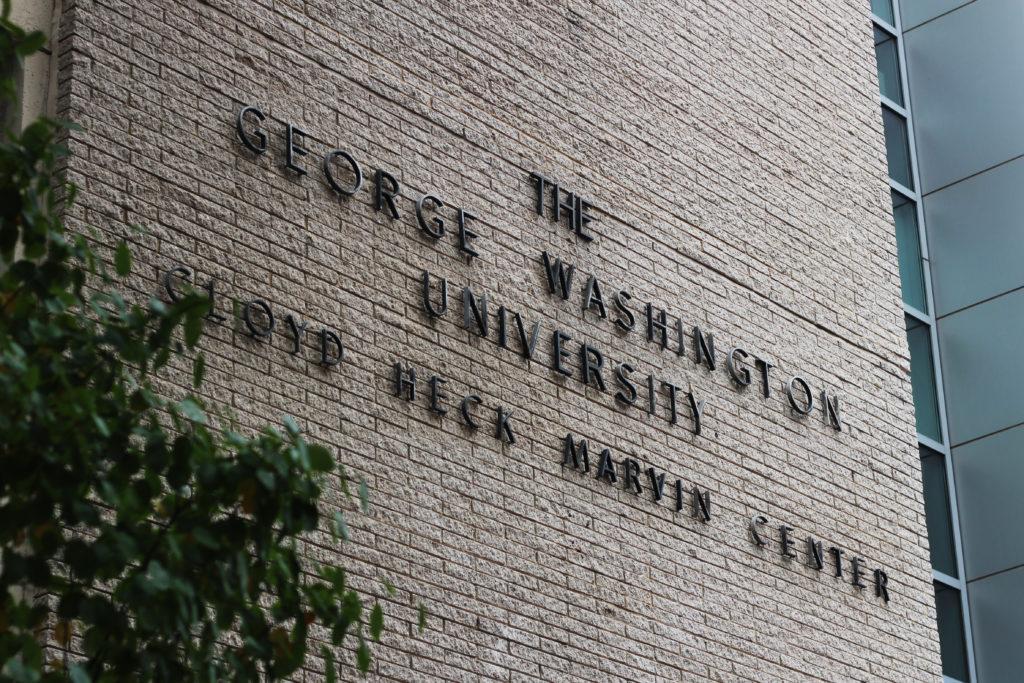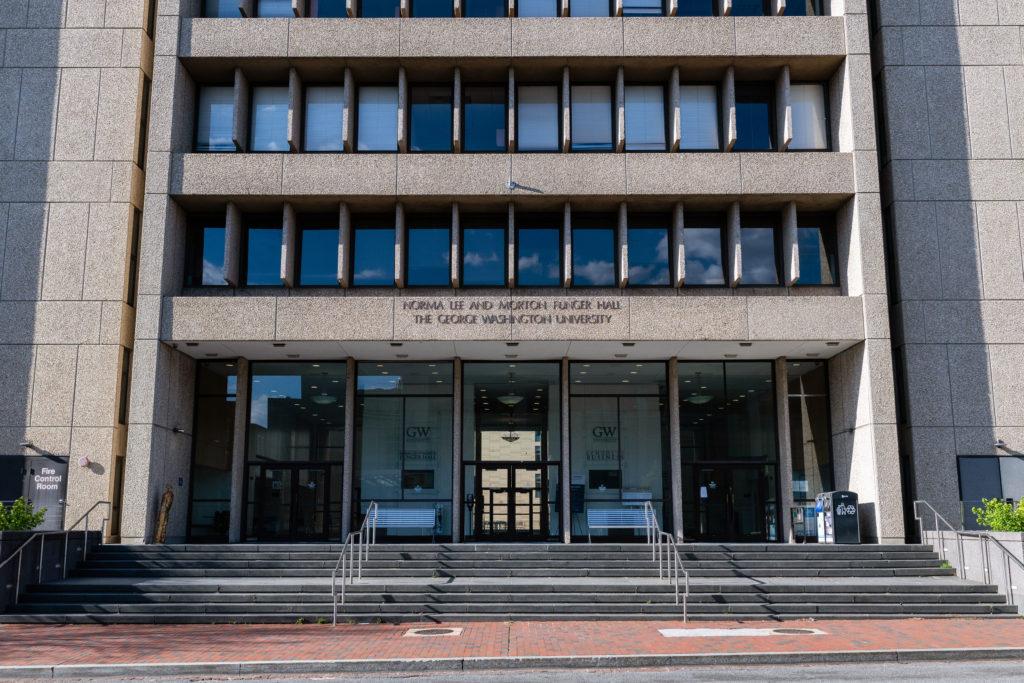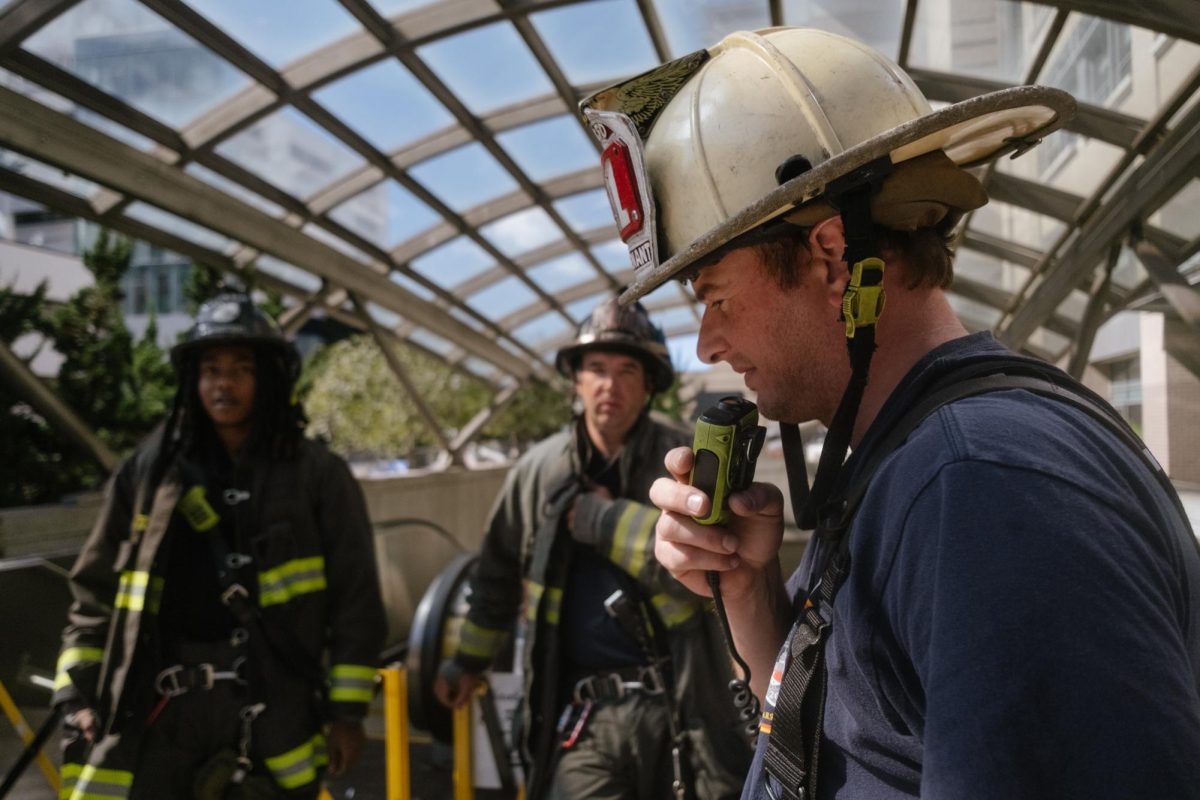Updated: June 29, 2021 at 3:51 p.m.
The University will rename the Cloyd Heck Marvin Center following years of protests over its namesake’s legacy of upholding racial segregation while serving as University president, the first decision under a newly approved framework to address renaming requests.
The Board of Trustees accepted the recommendation of a special committee formed last July to study the Marvin Center name, which found a “compelling case” for renaming under six principles established by the Board, according to a release. The building – which serves as GW’s hub for student organizations and a variety of University offices – will now be named the “University Student Center,” and officials will begin the process of removing the former president’s name from signage and other University materials.
“GW doesn’t change names lightly, and the Board appreciates the hard work and consultation with the community that brought us to this point,” Board Chair Grace Speights said in the release. “The Board concurs with the recommendation of the special committee on the naming of the Marvin Center.”
Trustees approved a framework for considering name change requests for University spaces last June and officials established special committees the next month to consider renaming the Marvin Center and the Colonials moniker.
The framework has also opened the door to six other renaming requests – Fulbright, Madison, Monroe and Francis Scott Key halls, The Churchill Center and the William P. Barr Dean’s Suite – which LeBlanc has said will be considered after a decision is made about the Colonials moniker.
Student protests about the Marvin Center’s namesake date back to its initial dedication in 1971, around two years after Marvin’s death. Officials will begin developing plans to educate GW community members about Marvin, who served as University president from 1927 to 1959, according to the release.
Marvin sought to prevent Black students from enrolling at the University and threatened to kick GW Hillel off campus as part of a presidency that community members remember to be marked by discrimination.
The renaming announcement also revealed that the Marvin Center special committee completed its report recommending the name change in late March. Speights said in May that trustees had received the committee’s recommendations but had not started the consideration process at the time.
“Some who favor renaming expressed outrage that the University has been slow to respond to the efforts of some students and alumni over the years to have the naming of the Marvin Center reconsidered in light of Marvin’s discriminatory and exclusionary views and policies and the burden of that legacy on diversity and inclusion at GW today,” the report states.
The report states that the naming of the building was motivated by a donation from Dorothy Betts Marvin, Marvin’s wife who is also the namesake of Betts Theater in the Marvin Center. The renaming of Betts Theater was beyond the scope of the committee’s charge, the report states.
Since it was formed last year, the committee has worked to conduct research on the history of the Marvin Center and its namesake with multiple town hall meetings to receive feedback from the GW community. Documents compiled by the committee last October revealed that members of the Knights of the Ku Klux Klan issued a letter to Marvin while he was president, thanking him for refusing admission to a civil rights activist as part of his segregationist policies.
The committee’s report states that committee members found Marvin’s “repugnant behavior” to be “prevalent and persistent,” and the harm caused by his behavior backed by historical evidence drove “strong support” for renaming. The report states that Marvin’s relationship to the University doesn’t “weigh in favor of, or against, the case for renaming.”
The process of rebranding and legal fees associated with renaming the Marvin Center could cost the University anywhere between $310,000 to $820,000 based on officials’ estimates regarding rebranding, legal fees, marketing and physical changes to the building, like updates to signage and printed materials, according to the report.
The report also states that the committee could not find evidence that Marvin’s conduct was not widely known when the building was first named and states that the “contextualization” of Marvin’s legacy could serve as an opportunity for education, both of which weigh in favor of renaming.
“This is a significant moment of opportunity for GW to demonstrate our institutional willingness to make change when needed, to stand upon values of a pluralistic and welcoming community, and to refine and re-establish our commitment to inclusion,” the report states.
The student hub was formerly known as the “University Center” when officials first unveiled it in 1970.
Students informally termed the building the “Kent State Memorial Center” later in 1970, in honor of those who died in the Kent State shooting, the killing of four Kent State students after the Ohio National Guard opened fire on students protesting the United States’ involvement in the Vietnam War.
Students went on strike following their outrage over the shooting, refusing to attend class and calling for the University to cancel final exams. They continued their efforts through the next year and protested at the building’s dedication ceremony in 1971, saying University leaders should have officially named it the Kent State Memorial Center.
This post has been updated to clarify the following:
This post has been updated to clarify a quote from Board of Trustees Chair Grace Speights.










